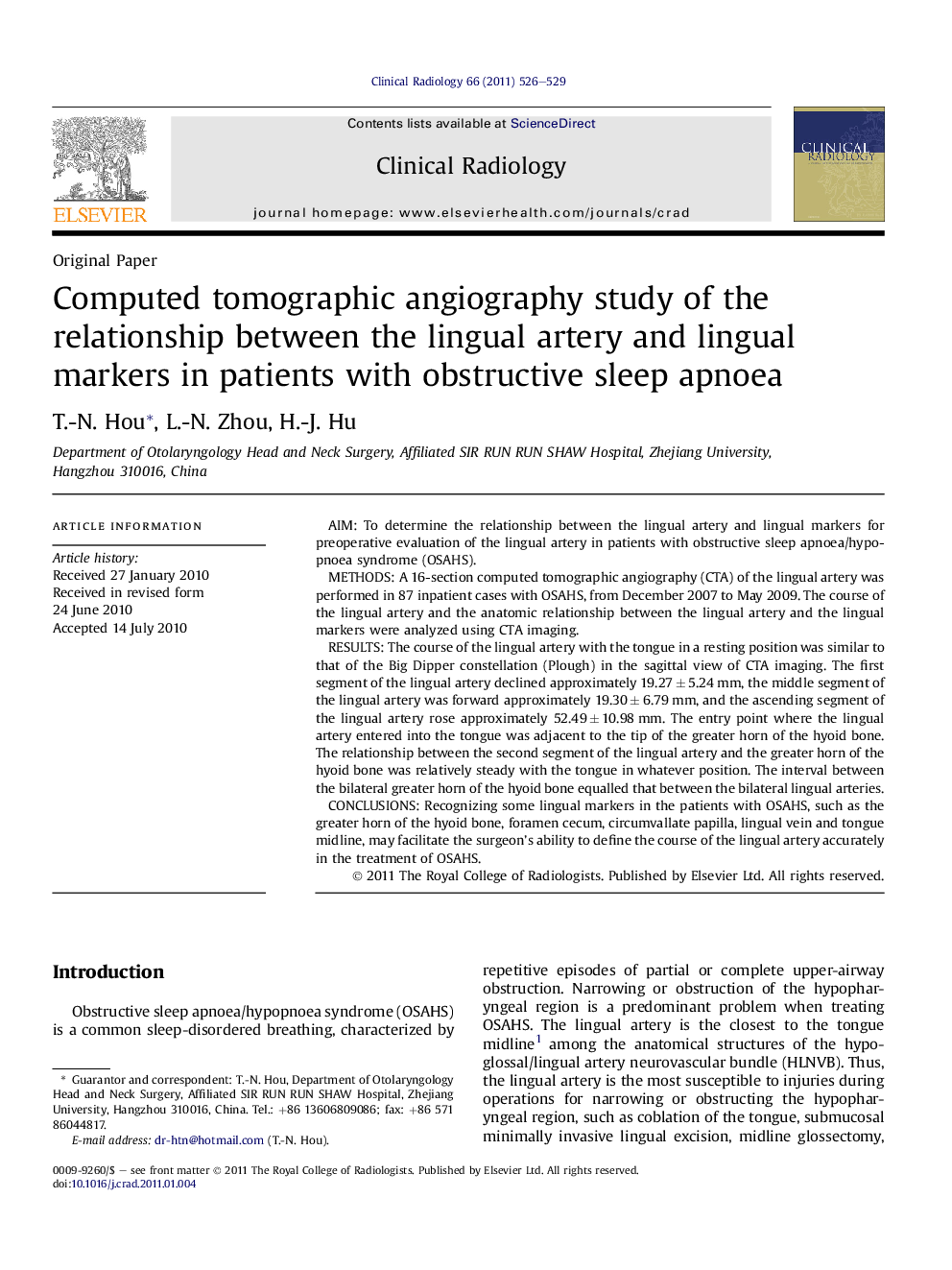| Article ID | Journal | Published Year | Pages | File Type |
|---|---|---|---|---|
| 3981948 | Clinical Radiology | 2011 | 4 Pages |
AimTo determine the relationship between the lingual artery and lingual markers for preoperative evaluation of the lingual artery in patients with obstructive sleep apnoea/hypopnoea syndrome (OSAHS).MethodsA 16-section computed tomographic angiography (CTA) of the lingual artery was performed in 87 inpatient cases with OSAHS, from December 2007 to May 2009. The course of the lingual artery and the anatomic relationship between the lingual artery and the lingual markers were analyzed using CTA imaging.ResultsThe course of the lingual artery with the tongue in a resting position was similar to that of the Big Dipper constellation (Plough) in the sagittal view of CTA imaging. The first segment of the lingual artery declined approximately 19.27 ± 5.24 mm, the middle segment of the lingual artery was forward approximately 19.30 ± 6.79 mm, and the ascending segment of the lingual artery rose approximately 52.49 ± 10.98 mm. The entry point where the lingual artery entered into the tongue was adjacent to the tip of the greater horn of the hyoid bone. The relationship between the second segment of the lingual artery and the greater horn of the hyoid bone was relatively steady with the tongue in whatever position. The interval between the bilateral greater horn of the hyoid bone equalled that between the bilateral lingual arteries.ConclusionsRecognizing some lingual markers in the patients with OSAHS, such as the greater horn of the hyoid bone, foramen cecum, circumvallate papilla, lingual vein and tongue midline, may facilitate the surgeon’s ability to define the course of the lingual artery accurately in the treatment of OSAHS.
